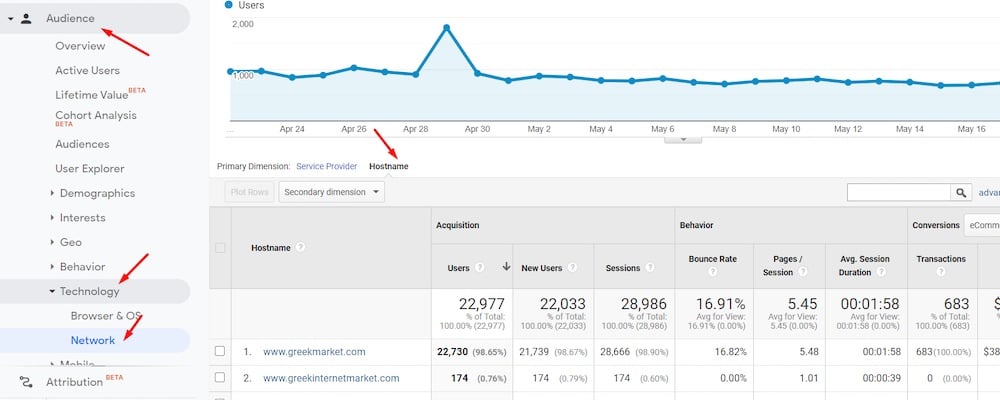Getting My In Which Order Does Google Analytics Filter Data To Work
Table of ContentsA Biased View of In Which Order Does Google Analytics Filter DataFacts About In Which Order Does Google Analytics Filter Data RevealedThe Best Guide To In Which Order Does Google Analytics Filter Data5 Simple Techniques For In Which Order Does Google Analytics Filter DataThe Facts About In Which Order Does Google Analytics Filter Data RevealedAn Unbiased View of In Which Order Does Google Analytics Filter Data
io" is the web site as well as if I most likely to the homepage and also click some various other web pages like signup page, it shows me in the real-time record popping-up as exactly how we set up in the filters. This page is the of site and also you can see the sub-domain highlighted as.
Similar to the previous procedure, we should create a brand-new filter as pointed out in the last steps - In Which Order Does Google Analytics Filter Data. in this brand-new filter, I'm naming it as and I'm picking Then I'm inputting the filter pattern as In this filter pattern, the pipeline icon () is included to affix any type of other hostname that you wish to include in addition to the other hostnames
The Best Strategy To Use For In Which Order Does Google Analytics Filter Data
This is exactly how you can go check your site as well as resurgence view in real-time reports. The real-time record currently shows the adjustments that you made when producing that filter. In this situation, the Broken page discusses concerning link of the web page i. e when the Web page link being duplicated the exact same, excluding lower or any type of minute elements.
Currently create a new filter and also I call it as. Pick and select the filter areas.

See This Report on In Which Order Does Google Analytics Filter Data
The adhering to guidelines will walk you via the procedure: Develop a brand-new Google Spreadsheet (or open an existing one). From the add-on description page, click the "+" in the leading right edge to include this add-on to your spread sheet.
Click "Accept". The add-on is currently installed. A "Google Analytics" submenu need to now appear in the Add-ons food selection. Records can be created manually or with the assistance of the add-on's report development device. To utilize the device, select "Attachments" > "Google Analytics" > "Create a New Report" from the menu bar.
This is deliberate. In Which Order Does Google Analytics Filter Data. The device is meant to assist get you started and give you with the info you may not recognize off the top of your head. The remainder of the fields will require to be gone into by you. If you have any inquiries concerning what to place in each area, see the recommendation at the bottom of this page.
The Of In Which Order Does Google Analytics Filter Data
It can be a sheet in the spreadsheet you're presently in, or a various spreadsheet altogether (as long as you have modify accessibility to that spreadsheet). To print the results to a various spreadsheet copy the spread sheet URL and also paste it into the cell to the right of the "spreadsheet-url" criterion.
This opens a report organizing dialog from this source where you can transform organizing on and off, and also establish exactly important link how regularly your record will run. To turn scheduling on, examine package labelled "Enable reports to run automatically." Once scheduling is enabled you can make use of the select dropdown to manage the time and frequency.
When organizing reports, make sure there is plenty of time between when you develop the schedule and also when the routine is supposed to run. Call Summary This is the record name. It will likewise be the name of the sheet where the report information is written.
The adhering to expression returns the last day of the previous month: =EOMONTH(TODAY(), -1) The end date for fetching Analytics information. Demands can specify an end date formatted as YYYY-MM-DD, or as a relative date (e. g., today, yesterday, or Ndays, Ago where N is a favorable integer). You can also utilize Sheets day features to specify this value programmatically.
Metrics can be defined this link in one of two styles: For instance, all of the following are legitimate values for the Metrics parameter - In Which Order Does Google Analytics Filter Data. For a lot of utilize instances, a list of statistics IDs is the easiest way to specify the Metrics specification.
10 Easy Facts About In Which Order Does Google Analytics Filter Data Shown
Call Description A checklist of dimensions to quiz. Dimensions can be defined in one of two layouts: For example, all of the complying with are legitimate worths for the Metrics specification. For most make use of cases, a list of measurement IDs is the most convenient method to define the Capacities specification.